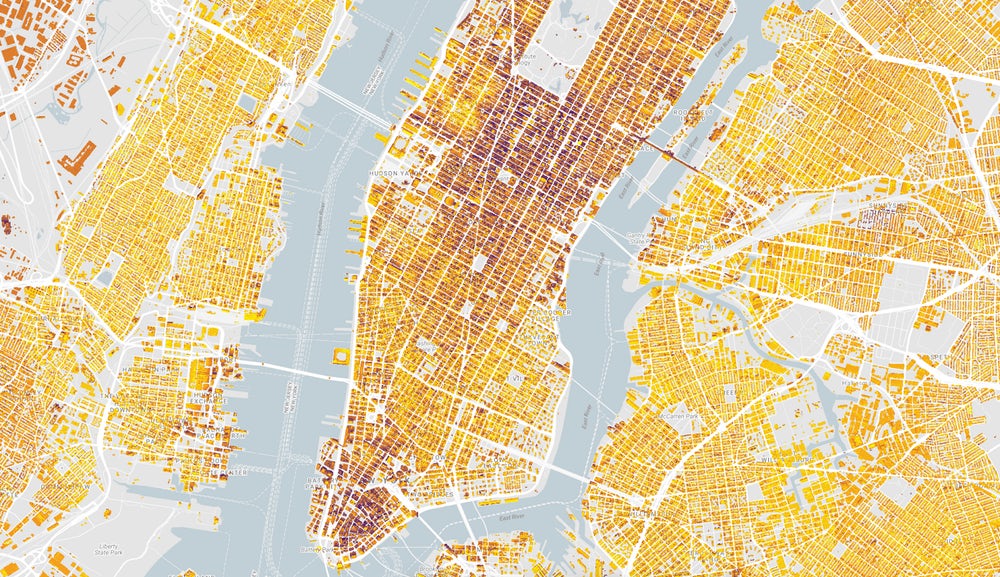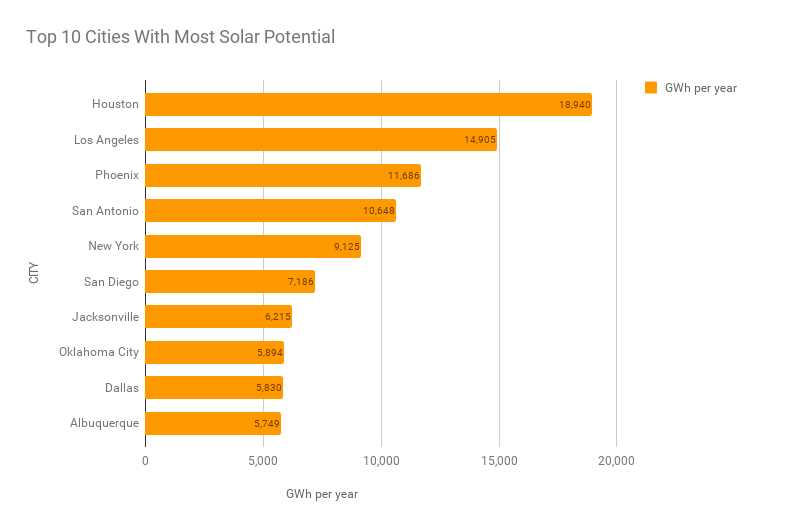By Nicole DiGiose
Two years ago, Google launched a project called Project Sunroof, which used Google Maps data to assess the solar potential of roofs. The idea was to give homeowners a better idea of whether or not they should switch to solar panels. Though it started small in just a few cities, the project has expanded to cover every state in the U.S., and the collected data makes a compelling case for going solar.

Google's Project Sunroof has analyzed about 60 million buildings. Image source: Google.
Of course, the high cost of installing rooftop solar panels causes many to hesitate, especially when homeowners aren't sure how much energy would actually be produced. Project Sunroof aims to remove most of that guesswork by not only combining aerial images from Google Maps with 3D-modeling of the roof in question, but also by tracking the sun's position, weather patterns, and shade from nearby objects.
Using this information, Google is able to calculate how many hours of sunlight a roof would receive along with how much is available for placement of solar panels. Then the system can estimate the resulting energy production and, based on current solar industry pricing, the costs and savings involved.
According to a blog post by Google, 79% of all rooftops analyzed are technically viable for solar. Over 90% of homes in Hawaii, Arizona, Nevada, and New Mexico are also viable, while states such as Pennsylvania, Maine, and Minnesota reach just about 60% viability.
Houston, Texas, ranks as the most solar potential U.S. city in the Project Sunroof data, with an estimated 18,490 gigawatt-hours (GWh) of rooftop solar generation potential last year. Following close behind are Los Angeles, Phoenix, San Antonio, and New York.

Image source: Google.
If the top 10 cities, shown in the chart above, reached their full rooftop solar potential, they'd produce enough energy to power 8 million homes across the U.S., according to Google's findings. With the Project Sunroof data explorer tool, anyone can explore rooftop solar potential across U.S. zip codes, cities, counties, and states.
It's been 10 years since Google became an early adopter of rooftop solar, installing a 1.6-MW solar array on its Mountain View, California, headquarters. Now Project Sunroof combines Google's interest in renewable energy with high-quality information about the potential of rooftop solar power.
Is going solar something you'd consider? Leave a comment below.
Advertisement
Learn more about Electronic Products Magazine





